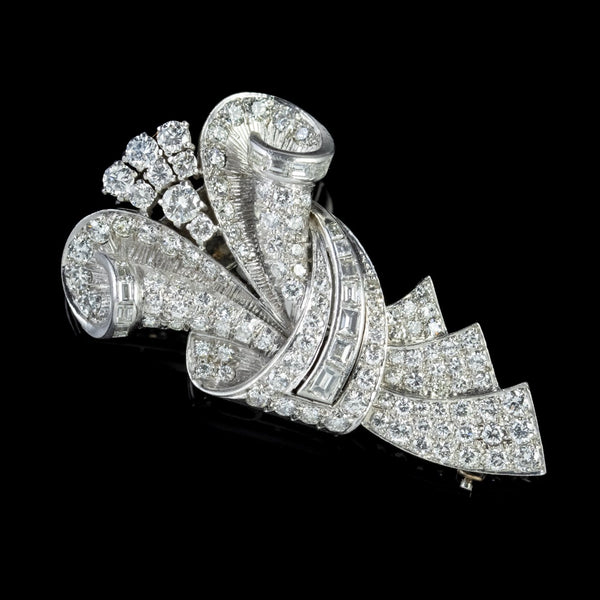Know Your Precious Metals
Know your Precious Metals In Antique Jewellery
Our collection of fine antique jewellery contains a great variety of different precious metals, so it can be difficult to decide exactly what you want. At Laurelle we want you to be able to make the best possible decision when selecting your perfect piece. We’ve put together this handy guide to the types of metal and their respective strengths so that you can make an informed decision.
Silver

Jewellers have been using silver for the creation of fine jewellery for hundreds of years. It is easy to work with and relatively inexpensive when compared to gold and platinum, which has allowed the creation of a huge variety of forms and intricate designs.
Silver is resistant to corrosion and oxidation, is non-toxic and has anti-microbial properties, which made it ideal for creating drinking vessels. Whilst silver does not degrade contact with the atmosphere can result in tarnishing, where the exposed surfaces become blackened. Wearing silver jewellery creates constant contact which prevents tarnishing, and tarnishing can usually be removed completely with gentle cleaning products, such as white vinegar and baking soda.
As Silver is more abundantly available than gold silver jewellery tends to be more affordable, but this is not a reflection of its quality. Silversmithing has a fine tradition, and has resulted in some incredible forms over the years.
To view our collection of silver jewellery, click here.
Yellow Gold

The most common metal used in the fashioning of jewellery is yellow gold. Like silver, it is extremely resistant to oxidation and corrosion, only more so. Gold’s unreactivity as an element makes it extremely well suited to jewellery, however pure gold is a soft material and easily damaged.
To make gold more durable jewellers use gold alloys with a variable amount of stronger metals such as copper. The term “Carat”, abbreviated to “ct”, indicates the percentage of gold within the metal.
24 carat is the highest measurement, with 99.9% of the alloy being made up of gold. Gold of this type is extremely valuable. Beautiful though it is the metal is far too soft for use in jewellery.
18 carat gold is usually the highest concentration used in jewellery, with 75% pure gold. The metal is much stronger than 24 carat gold, but retains the warmth and brightness that makes the metal aesthetically pleasing. At this concentration the secondary metals which are added to form the alloy have a pronounced effect on the colour of the gold, which leads to a dazzling array of different variations
Click here to view out collection of yellow gold pieces.
White Gold

White gold, one of the most common variants, contains palladium, nickel, zinc or platinum to give the metal a rich silver colour that provides the ideal setting for diamonds, sapphires and many other precious stones.
To view our collection of White Gold jewellery click here.
Rose Gold

Rose gold contains copper and silver to give it a subtle pink complexion that complements semi precious stones such as amethyst. Many other variants of gold have been created in modern day, including green gold and red gold, however antique pieces predate the creation of many of these alloys.
Click here to see our collection of Rose Gold pieces.
Pinchbeck

Whilst the majority of antique jewellery is silver, gold or platinum there are specimens which are crafted from a metal alloy created by and named after Christopher Pinchbeck, a London clockmaker, in the 18th Century. An alloy of copper and zinc, Pinchbeck was created as a less expensive alternative to gold.
At the time low carat gold alloys were not used, making most gold jewellery too expensive for the majority of people to own. This material was intended to allow less affluent individuals access to jewellery that had the characteristics of gold without the prohibitive cost.
Although unscrupulous merchants attempted to pass Pinchbeck off as gold in the years after its creation it is now valued in its own right as a piece of jewellery history.
You can view our Pinchbeck pieces here.
Platinum

Whilst gold and silver certainly dominate the jewellery industry, it is led by platinum. Like its fellow precious metals, platinum is one of the least reactive metals. It is more resistant to corrosion than both silver and gold, and rarer than both. The longevity and relative scarcity of platinum makes it the most desirable and valuable metals on earth.
Platinum is often used as the setting for the most beautifully cut diamonds, and has a prominent role in the jewellery of the royal families of many countries.
In the modern age platinum has found a practical use in catalytic converters, assisting with making fuel emissions more environmentally friendly. This extremely common device has led to an decrease in the amount of platinum available to jewellers, which has further increased its value.
You can see our platinum pieces here
Looking for more information? Our expert staff are always happy to help with any questions you may have. Feel free to give us a call on England 0333 700 4500 or drop us an email at enquiries@antiquejewellerygroup.com.


